Rome Attractions
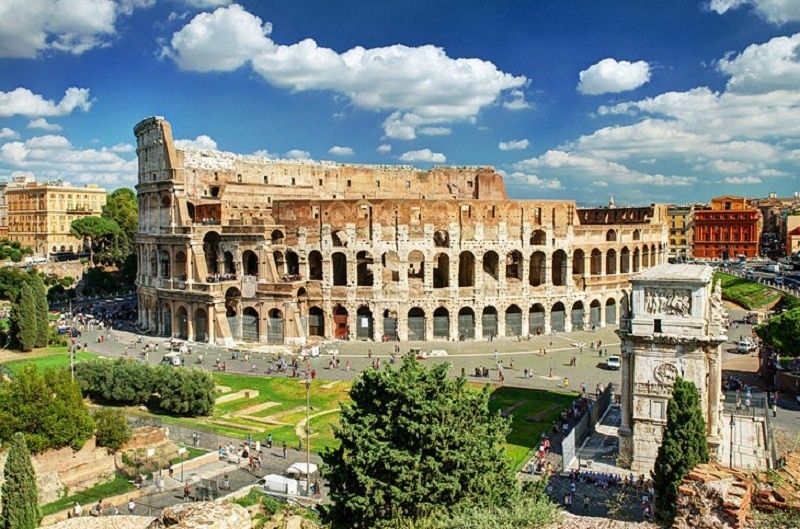
The Colosseum and the Arch of Constantine
As the Eiffel Tower is to Paris, the silhouette of the Flavian Amphitheatre is to Rome. The largest structure left to us by Roman antiquity, the Colosseum still provides the model for sports arenas – present day football stadium design is clearly based on this oval Roman plan.
The Colosseum was large enough for theatrical performances, festivals, circuses, or games, which the Imperial Court and high officials watched from the lowest level, aristocratic Roman families on the second, the populace on the third and fourth.
Beside the Colosseum stands the almost equally familiar Arch of Constantine, a triumphal arch erected by the Senate to honor the emperor as “liberator of the city and bringer of peace” after his victory in the battle of the Milvian Bridge in 312. Lines are long and move slowly.
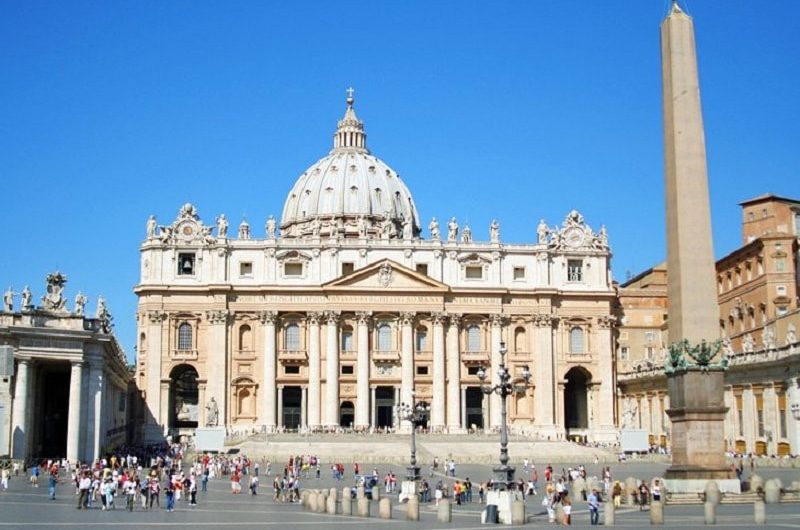
Vatican City
The Vatican is the smallest independent state in the world, with an area of less than half a square kilometer, most of it enclosed by the Vatican walls. Inside are the Vatican palace and gardens, St. Peter’s Basilica, and St. Peter’s Square, an area ruled by the Pope, supreme head of the Roman Catholic Church. This compact space offers a lot of things to see, between its museums and the great basilica itself.
In the Vatican Palace are the Raphael Rooms; the Borgia Apartments; the Vatican Library, and a number of museums that include the Picture Gallery, Museum of Secular Art, Etruscan Museum, and others. The collections you can see in these cover everything from papal coaches to 20th-century art reflecting religious themes.
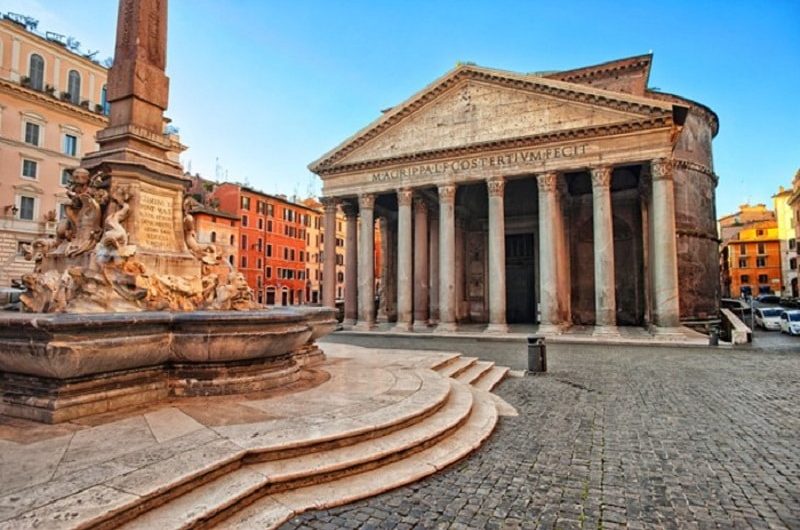
The Pantheon
The Pantheon – the best-preserved monument of Roman antiquity – is remarkably intact for its 2000 years. This is despite the fact that Pope Gregory III removed the gilded bronze roof tiles, and Pope Urban VIII ordered its bronze roof stripped and melted down to cast the canopy over the altar in St. Peter’s and cannons for Castel Sant’Angelo.
The Pantheon was rebuilt after damage by fire in AD 80, and the resulting brickwork shows the extraordinarily high technical mastery of Roman builders. Its 43-meter dome, the supreme achievement of Roman interior architecture, hangs suspended without visible supports – these are well hidden inside the walls – and its nine-meter central opening is the building’s only light source.
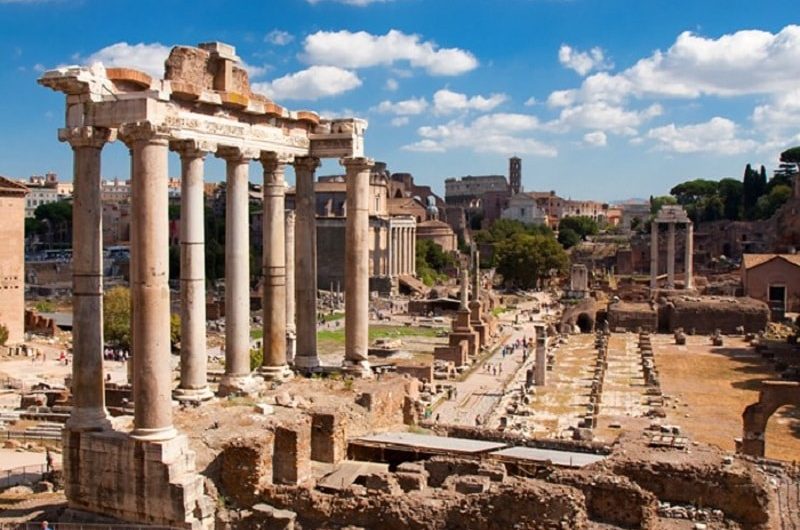
Roman Forum
Walking through the forum, now in the middle of a throbbing modern city, is like stepping back two millennia into the heart of ancient Rome. Although what survives of this center of Roman life and government shows only a small fraction of its original splendor, the standing and fallen columns, its triumphal arches, and remains of its walls still impress, especially when you consider that for centuries, the history of the Forum was the history of the Roman Empire and of the Western world.
Roman political and religious life was centered here, along with the courts, markets, and meeting places. After the seventh century, the buildings fell into ruin, and churches and fortresses were built amid the ancient remains. Its stones were quarried for other buildings and it was not until the 18th and 19th centuries that systematic excavations brought the ancient buildings to light from under a 10-meter layer of earth and rubble.
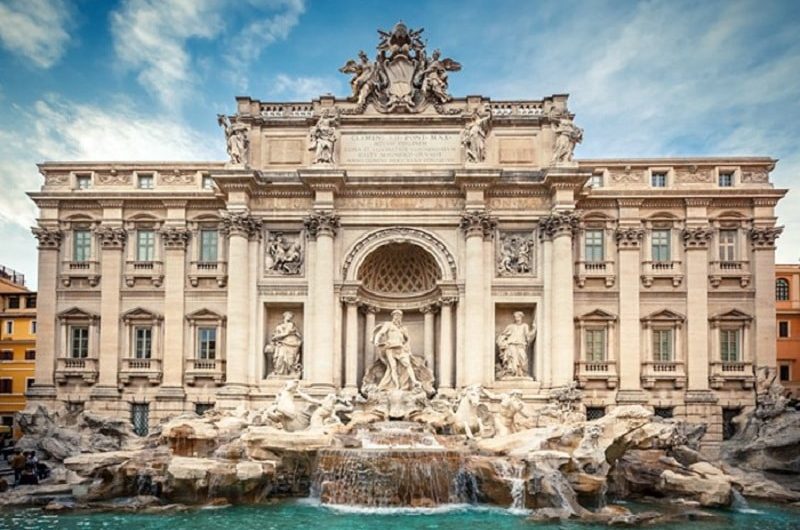
Trevi Fountain
One of the city’s most popular tourist attractions, this 17th-century masterpiece has been immortalized in films until it is almost a required visit. Throwing a coin (not three) into the Trevi Fountain (Fontana di Trevi) is a tradition that is supposed to assure your return to Rome.
Rome’s largest fountain, Fontana di Trevi is supplied by an aqueduct originally constructed by Agrippa, the great art patron of the first century BC, to bring water to his baths. The fountain was created for Pope Clement XII between 1732 and 1751 by Nicolò Salvi, and built against the rear wall of the palace of the Dukes of Poli.
It depicts the sea god Oceanus (Neptune), with horses, tritons, and shells. The water swirls around the figures and the artificial rocks, and collects in a large basin, always filled with coins.
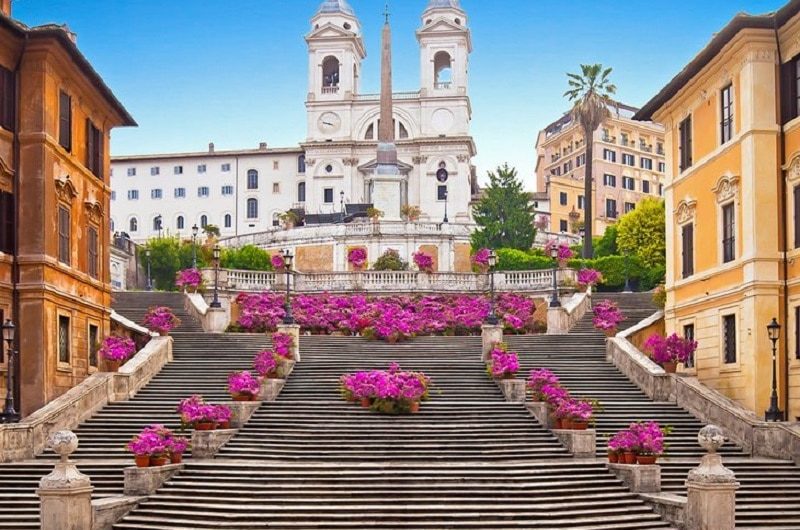
Centro Storico & the Spanish Steps
Take a look at a Rome tourist map, and you’ll see one area so filled with things to do that it’s hard to read the street names. This is the Centro Storico, the historic center of Rome, with so many art-filled churches, resplendent palaces, and lively squares that you could spend your whole vacation strolling its ancient streets and lanes.
Spend some time just to absorb the neighborhood’s atmosphere instead of going from one of its must-see sights to the next. Along with Piazza Navona, the Trevi Fountain, and the Basilica of Santa Maria Maggiore, stop in less well-known churches, such as Santa Maria del Popolo, where you’ll find works by Bernini and Caravaggio.
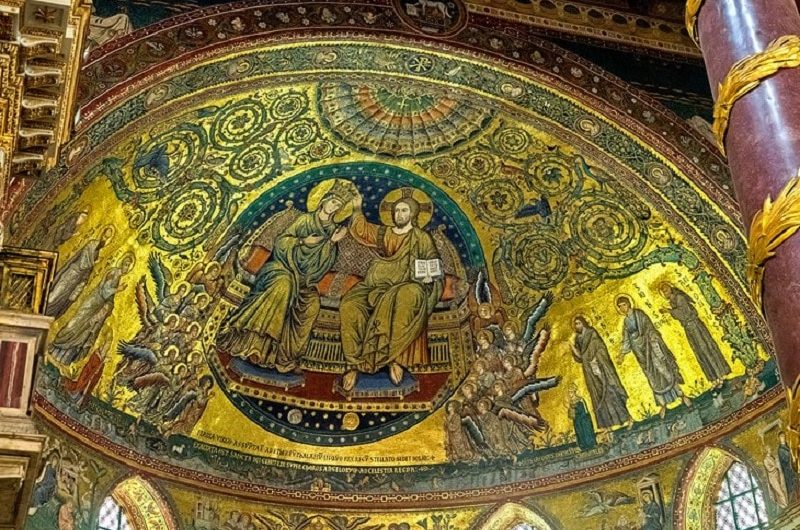
Santa Maria Maggiore
One of Rome’s most majestic churches, Santa Maria Maggiore has stood here since the fourth-century Pope Liberius had a vision of the Virgin directing him to build a church where snow fell the following day. Although it was August, snow did fall on the Esquiline hill the next morning, so here the great basilica was built.
Mass has been celebrated here every day since the fifth century. The three aisles of its 86-meter-long interior are separated by 40 columns of marble and four of granite, and the apse added in the 13th century is lined with mosaics of Old and New Testament themes, masterpieces of Rome’s famous mosaic artists.
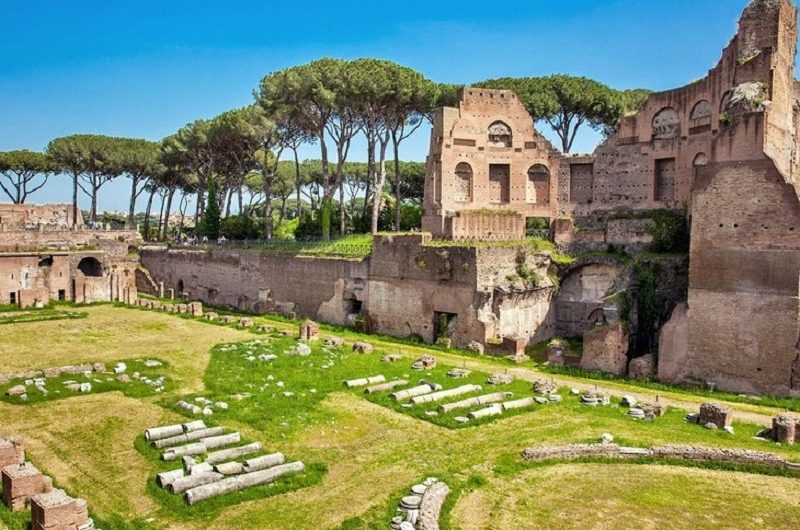
Palatine Hill
Strategically set 50 meters above the Tiber, the Palatine Hill shows evidence of Rome’s earliest settlement: rock-cuttings found in front of the Temple of Cybele show human activity as long ago as the ninth century BC. Later, this was the site chosen by the emperors and great aristocratic families for their palaces.
The Farnese Gardens were laid out on the hill in the 16th century for Cardinal Alessandro Farnese, a pleasure park of terraces, pavilions, lawns, flowerbeds, trees, and fountains designed as a kind of stage-setting for social gatherings.
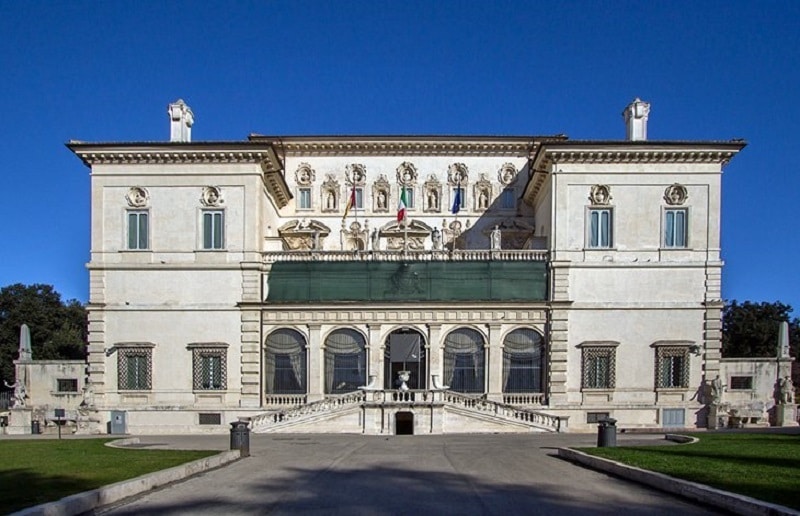
Villa Borghese Gallery and Gardens
One of Rome’s largest parks, the Borghese Gardens contain a number of attractions that include two museums, the most prominent of which is the Villa Borghese. Built as a party villa and to house the Borghese art collection, the gallery contains paintings, sculptures, mosaics, and reliefs, most from the 15th to the 18th century, and include works by Raphael, Titian, Caravaggio, and Rubens.
Elsewhere in the park, Villa Giulia was built as a summer residence for the 16th-century Pope Julius III and houses the Etruscan Museum. More villas are from the world exposition that was held in Rome in 1911.
The park is an English-style landscape garden, with walking paths and ponds where you can rent row boats. You can also rent bikes or a surrey to explore the park. There is a good zoo, Bioparco di Roma, with naturalized enclosures and a miniature trail connecting its various sections. A number of its attractions will appeal to children, including playgrounds, weekend pony rides, and occasional puppet shows.
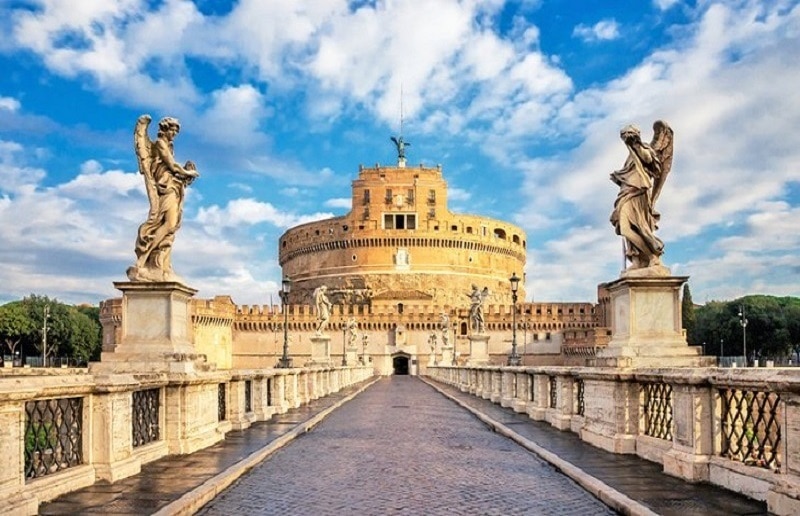
Castel Sant’Angelo National Museum
In AD 271, Emperor Aurelian took advantage of its position guarding the northern approaches to the city and incorporated it into his new system of walls surrounding the city. As a bastion it protected the city from barbarian attacks, and by the Middle Ages had become a substantial fortress. In times of peril, popes fled here across a secret elevated corridor, the Passetto di Borgo, and stored their most precious riches in the castle’s treasury.
Visitors reach the castle across a pedestrian bridge lined with statues of angels (by Bernini), and ascend to its five floors on a spiral ramp. At its various levels are prison cells, a large collection of weapons, and splendidly decorated papal apartments covered in Renaissance frescoes. At the top is a terrace with stunning views of the city.